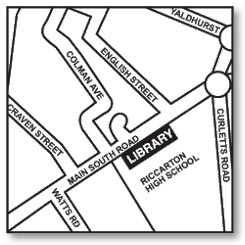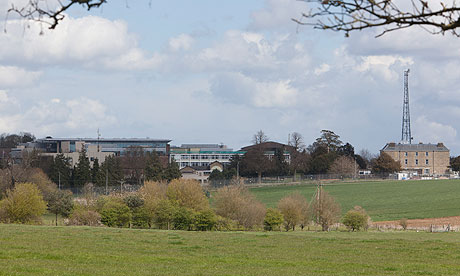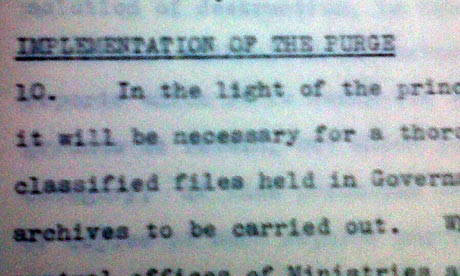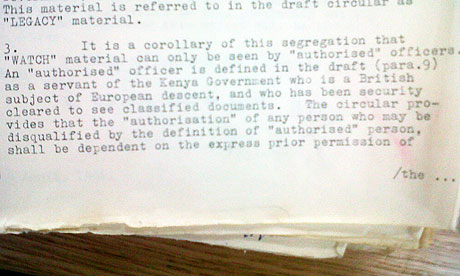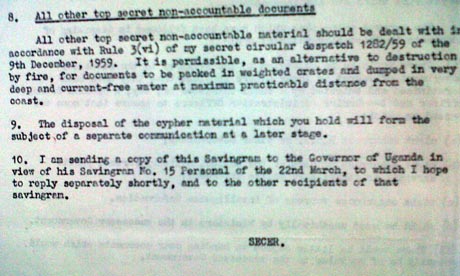Introduction
With the ever-developing digital realm comes the raised expectations of the user—a click of the mouse can purchase a pizza, book a holiday offshore, or access previously unattainable informational materials. As part of this development repositories offering digital collections, and specifically designed digital cultural heritage libraries, are increasingly common on the World Wide Web. Digitalised records—once seen in terms of preservation only—have opened the virtual door to the archive, increasing awareness and use.
Along with expectations of accessible digital collections, pressures of becoming more user-centric has meant cultural heritage institutions (CHIs) need to explore ways to encourage higher levels of user interaction, engagement, and participation: “our patrons are used to being able to review books on Amazon.com, comment on the musings of a friend as posted on their blogs, or contribute what they know about slavery in the antebellum South to a Wikipedia entry… they expect to be able to do similar activities when they encounter our Web-based content” (Daines & Nimer, 2009).
One way to do this is through well-designed interface, but it is primarily through Web 2.0 functionalities that CHIs can move beyond merely disseminating information to creating participatory virtual spaces. Interactive web tools are “changing the ways that archivists interact with their patrons,” and how patrons “approach archival research and how they view their archival interactions” (Daines & Nimer). As a result, if CHIs are to be sustainable and have a lasting impact in the ever-changing digital realm, the facilitation of participation should inform any digital project.
However, it seems the benefits of user participation is not fully realised by CHIs, especially in New Zealand. Although there are numerous digital libraries with a rich field of accessible content (such as the Alexander Turnbull Library’s Timeframes, Discover, and Papers Past; the University of Waikato’s New Zealand Digital Library; or the Digital Library of the Auckland Museum), the combination of access and user participation via Web 2.0 is relatively rare. This could be the result of managerial, technological, or financial barriers, or simply due to the young age of the field. As Sharma points out,
Academic literature addressing the use of Web 2.0 applications and principles by CHIs has only lately started moving beyond conceptual explorations of its meaning, benefits, challenges and implications for the industry… little research has been found that focuses solely on exploring the use of Web 2.0 applications and principles in online digital collections” (2011, p.2).
Whatever the barrier, their overcoming will facilitate egalitarian possibilities in the digital realm.
This essay hopes to highlight the concepts posited above, through the analysis of New Zealand three digital collections—Passchendaele Casualty Forms, Find, and Ceismic: Canterbury Earthquake Digital Archive. The first is managed by Archives New Zealand for a very specific user— genealogists—and is indicative of a use-centric digital collection, while the National Library of New Zealand’s Find is a finding aid for various digital collections that allows the user to tag digital objects. Ceismic is a very different digital collection, designed to capture and archive stories relating to the Christchurch Earthquakes of 2010 and 2011 that, due to its purpose, has a very interactive component and highlights the potential of user participation with digital libraries. These very different collections represent the wide range of Web 2.0 capabilities that, unfortunately, are yet to be harnessed by many New Zealand digital collections.
Digital libraries and the potential of participation
According to The Digital Library Federation:
Digital libraries are organizations that provide the resources, including the specialized staff, to select, structure, offer intellectual access to, interpret, distribute, preserve the integrity of, and ensure the persistence over time of collections of digital works so that they are readily and economically available for use by a defined community or set of communities (2006-2008).
As well as ensuring access and use over time, digital libraries can serve other purposes. In the context of North America but with international relevance, The Association of Research Libraries argues that digital libraries can:
expedite the systematic development of: the means to collect, store, and organize information and knowledge in digital form; and of digital library collections in North America; promote the economical and efficient delivery of information to all sectors of North American society; encourage cooperative efforts which leverage the considerable investment in North American research resources, computing and communications network; strengthen communication and collaboration between and among the research, business, government, and educational communities; take an international leadership role in the generation and dissemination of knowledge in areas of strategic importance to North America; and contribute to the lifelong learning opportunities of all North Americans (1995).
However, digital libraries have the capability to go much further than search and access, facilitating “the creation of collaborative and contextual knowledge environments” that can “match and indeed dramatically extend traditional libraries” (Lagoze, Krafft, Payette, & Jesuroga, 2005). The advantages of technology means digital libraries can transcend the constraints of the physical environment, allowing collections to be collaborative, participatory, and user-centric.
As well as sound interface design, the development of blogs, social media, wikis, and tagging—referred to as Web 2.0—can be employed by CHIs to encourage user participation and collaboration. Theses changes in digital technology enable software developers and end-users to use the World Wide Web in new and innovative ways to what it was originally intended (Wikipedia). As a result, “Web 2.0 technologies have transformed the Internet into a participatory experience” (Daines & Nimer), offering “archives the chance to develop new and innovative ways of conveying their message,” as well as allowing users “a greater exploratory and active role, thus enhancing the learning experiences available” (Lester, 2006, p.88).
Blogs—websites formatted to provide diary-like entries of an individual or institution—and social media platforms such as Twitter or Facebook, can be used by CHIs to publicize digital collections while allowing for networking and questions from users. Tagging and collaborative websites (wikis) that allow users to add or modify content on a repository’s finding aids or records, aids both the usability of the collection and increases user participation—drawing on the users knowledge of certain collections and their own search methods to provide a wealth of new information.
Research has shown that Web 2.0 does in fact “engage users online and encourage the development of an active community”—systems that allowed users to tag or create and edit content had significant positive effects on the participation of the user when compared with non-Web 2.0 enabled systems (Sharma, p.7). Unlike Papers Past, users of the National Library of Australia’s Australian Newspapers can “interact with its collections through tagging, text correcting, and commenting”—the tagging feature was found to be a real crowd-pleaser (Holley, 2009, as cited in Sharma, p.9), creating the growth of an active community of users engaging with the collection.
Despite the positive effects of Web 2.0 CHIs, particularly archives, have been slow to implement it: “findings suggest that the cultural heritage sector has been comparatively slow in making digital collections Web 2.0-enabled though a large number of institutions have started exploring Web 2.0 for other purposes” (Sharma, p.69). Barriers to implementation are many, and includes the need to know the “audience and objectives before launching any Web 2.0 initiatives” (Daines & Nimer), the blurring of lines between the professional custodian and the user, issues of authenticity and intellectual property, potential obsolescence of Web applications (through technical or social factors), balancing participation with privacy, and crucially, winning over CHIs staff and management (Sharma, p.8).
A quick scan of the New Zealand environment confirms this claim. Many New Zealand digital libraries lack Web 2.0 applications—the only collections I found with wiki/comment capabilities were NZ On Screen (http://www.nzonscreen.com/) and the Audio Visual Archives (http://audiovisual.archives.govt.nz/exhibitions/). Even collections with a strong user-focus and an understanding of how and why the collection will be used did not contain Web 2.0 functions. An example of this is Passchendaele Casualty Forms, a digital collection managed by Archives New Zealand.
Passchendaele Casualty Forms
http://www.archives.govt.nz/exhibitions/passchendaele/main
Archives New Zealand
In 2005 the personnel files of those who served in the New Zealand Defence Services, namely in the South African War and the First World War, were transferred to Archives New Zealand (Lafferty-Hancock, 2006). Passchendaele Casualty Forms ensures these significant digitalised war records are available as an easy to use digital collection.
The collection’s home page greets the viewer with a simple interface and an explanation on the records original source and the selected files on show. The records are accessed through an alphabetically organized list of soldiers (of which there are close to 700). These are then displayed to the left of a generic description on how to use the hyperlinked finding aid (Archway) in order find out more on that particular soldier, or wider contextual information.
The usability of the collection is excellent. A clean and concise layout, coupled with an alphabetic menu and linear process enables the user to understand the collection, control the search system, and easily find the records on show. The viewer is given information about the records and what they contain (such as name, date of birth, rank, and the movements of the individual). This simple, informative interface allows for easy navigation, and ultimately, user satisfaction.
The collection’s interface suggests a user-centric premise, highlighting Archives New Zealand’s digital collection of personnel files and their availability to genealogists. In this sense, the collection management is rather successful in meeting its intended users—research into how genealogists search for information revealed that, “genealogists… wanted lists of names, or names indexes, or search engines that retrieved by name to facilitate their research” (Duff & Johnson, 2003, p.85). The alphabetical structure of the records and the encouraged use of names in Archway ensure these needs are met.
However the collection’s usability and simple interface comes at the expense of user participation—there is no space for comments or other participatory functions. The key features of online participation identified by Sharma—‘join, converse, collect, critique, create, and compare’ (p.50-62)—are not applicable to the collection, which is a shame considering the passionate and ever-growing community of genealogists. And while hyperlinks allows for further context, the user cannot tag records to enhance the search and retrieval process, or add their own context for others.
Find
http://find.natlib.govt.nz/
National Library of New Zealand
Designed by the National Library of New Zealand, Find is “a discovery tool that spans multiple catalogues and digital collections” (National Library of New Zealand, 2011), allowing the user to extensively search and access almost all of the National Library’s digitalized collections. These include Papers Past, Timeframes, Publications NZ, and Discover.
The home page is simple, easy to comprehend, and prominently displays a customizable search box as the main feature—allowing various entry-points into the collections. A sidebar menu contains links, login details, and a ‘User tags’ hyperlink, conveying that users can have some kind of personalized interaction with the collection from the beginning. An informative ‘Help Menu’ has been developed after detailed discussions with 27 Find users, offering a swag of valuable content.
Once the user is logged in they can view their search history in a ‘Favorites’ folder. Accessed items can also be saved to this customizable folder, allowing objects to be viewed, emailed or printed at a later date. Users can also ‘tag’ objects—adding unique keywords to items that can personalize search language and make “collections more accessible to the average user,” creating “a dialogue between the piece of art being described and the user” (Daines & Nimer). For example, on the description page of a 1970 photograph of Karori Mall, Wellington, users have created tags for the types of cars in the picture, adding a level of depth not given in the original metadata.
Find can tick the ‘join, collect, create’, and ‘compare’ boxes on Sharma’s list, although ‘converse’ and ‘critique’ are left to the private realm of emailed feedback. Having a publicly accessible wiki or blog would greatly improve the conversational aspect of Web 2.0 participation, as would more prominent menus on tagging and Web 2.0 in general. Nonetheless, Find is one of the few New Zealand digital collections that allows user tagging, and is more participatory than Passcehdaele Casualty Forms and many other digital collections.
Ceismic: Canterbury Earthquake Digital Archive
http://ceismic.org.nz/
University of Canterbury
Ceismic: Canterbury Earthquake Digital Archive has been initiated by the University of Canterbury to act as a “comprehensive digital archive of video, audio, documents and images related to the Canterbury Earthquakes of 2010 and 2011” (University of Canterbury, 2011). As an online collecting archive its content (and success) relies heavily on input from the user, and even though the project is at an early stage, already enables an impressive level of participation not present in other collections.
The aesthetically pleasing and functional homepage signals the library’s intention: easily accessible content by and for the user. The homepage itself is customisable—background images form a slideshow that can be changed by the user—and features links, information, and social media updates such as Tweets. Its three main collections—Quakestories, When My Home Shook, and Kete Christchurch—are all signified and easily accessible.
Quakestories, an online forum for the collection of personalised stories relating to the two earthquakes, allows the user to directly create for, and converse with, the collection. Previously collected stories are displayed which creates a conversation and a sense of community that typifies the best of Web 2.0 functionality. Similar to Quakestories is When My Home Shook, but this collection focuses specifically on the participation of children. Finally, Kete Christchurch is an online basket for collecting a range of materials relating to the earthquakes, from oral histories to photographs.
How the collected digital objects will be accessed and used, and whether Web 2.0 capabilities will be available in the final form of Ceismic is yet to be seen. However its current use of Web 2.0 is at a level of user interaction, engagement, and particpation not encountered in the examples cited above, firmly placing the user at the centre of the collection and beginning a conversation that should be fruitful for generations to come.
Conclusion
Digital libraries can be more than search and access portals to information. Through well designed interfaces and Web 2.0 capabilities, digital libraries and their collections can extend the role of the physical library—building communities, encouraging participation, and engaging users in informative and exciting ways. Collections that enable the user to join, converse, collect, critique, create, and compare have been shown to create positive effects for both the user and the CHI.
Despite this, many digital collections in New Zealand do not have Web 2.0 capabilities. The digital collections highlighted above are representative of the wider environment—little or no use of Web 2.0, or when it is used, falls short of a full Web 2.0 experience. The adolescence of Web 2.0, or issues of around the user, professionalism, authenticity, obsolescence, privacy, and acceptance could be some reasons for its slow uptake in New Zealand.
Yet these barriers are not insurmountable, and CHIs need to engage with Web 2.0 and its challenges: “Archivists need to actively experiment with Web 2.0 technologies in order to discover which of these tools will best meet our needs and the needs of our patrons. In order to make rational decisions about which technologies to experiment with, we need to understand what Web 2.0 is and how it can potentially be used to augment our services” (Daines & Nimer). User-surveys and a focus on a collection’s primary audience would go a long way in determining if and how Web 2.0 could be implemented; clear guidelines and boundaries around the user/custodian roles would highlight professional and authenticity issues; good policies and project management would counter obsolescence and privacy issues (or at least put plans in place to deal with them); and finally, research, advocacy, and awareness-building could help tip the balance in the staffroom towards Web 2.0 implementation. Whether they want to or not, CHIs need to deal with these barriers to keep up with user expectations. Or less politely, “harness the new collaboration or perish” (Daines & Nimer).
References:
Association of Research Libraries. (1995). Realising Digital Libraries. Accessed 10 December 2011 from http://www.arl.org/resources/pubs/mmproceedings/126mmproceedings
Daines, J.G., & Nimer, C.L. (18 May, 2009). Web 2.0 and archives. Accessed 11 December 2011 from http://interactivearchivist.archivists.org/
Duff, W. M. & Johnson, C. A. (2003). Where is the list with all the names? Information seeking behavior of genealogists. American Archivist, 66 (Spring/Summer), 79-95.
Holley, R. (2009). Many Hands Make Light Work: Public Collaborative OCR Text Correction in Australian Historic Newspapers.
Lafferty-Hancock, F. (2007). Public Records and Archives New Zealand. In A. Fields & R. Young (Eds.) Informing New Zealand: Libraries, Archives and Records (5th ed., pp.187-201). Lower Hutt, New Zealand: The Open Polytechnic of New Zealand.
Lagoze, C., Krafft, D. B., Payette, S. & Jesuroga, S. (2005). What is a digital library anymore, anyway? D-Lib, 11(11). Accessed 10 December 2011 from http://www.dlib.org/dlib/november05/lagoze/11lagoze.html
Lester, P. (2006). Is the virtual exhibition the natural successor to the physical? Journal of the Society of Archivists, 27(1), 85-101.
National Library of New Zealand. (2011). Help using this site. Accessed 11 December 2011 from http://find.natlib.govt.nz/primo_library/libweb/customised/find/help/what/
Sharma, P. (2011). Digital Collections and Web 2.0: Investigating adoption and participation. (Unpublished MLIS research project, Victoria University of Wellington, 2011). Accessed 12 December 2011 from http://researcharchive.vuw.ac.nz/handle/10063/1732/
University of Canterbury. (2011). Ceismic: Canterbury Earthquake Digital Archive. Accessed 12 December 2011 from http://ceismic.org.nz/
Wikipedia. (2011) ‘Web 2.0’. In Wikipedia, The Free Encyclopedia. Accessed 11 December 2011 from http://en.wikipedia.org/w/index.php?title=Web_2.0&oldid=429085115














